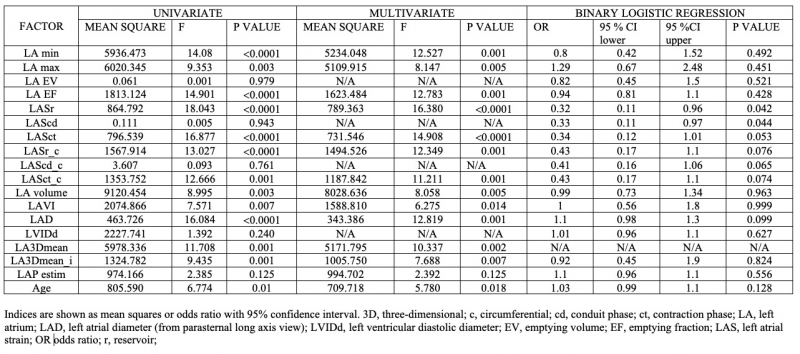LEFT ATRIAL STRAIN PARAMETERS ARE ABLE TO PREDICT PRESENCE OF ATRIAL FIBRILLATION
Background: Three-dimensional speckle-tracking echocardiography allows evaluation of left atrial function. Atrial fibrillation (AF) is most common arrhythmia, and one of its manifestations is increased left atrial filling pressure and left atrial dilatation.
Methods: Echocardiography loops were collected between December 2019 and December 2021, only valid atrial loops and sinus rhythm during examination. Spearman test was used for correlation matrices of left atrial parameters; uni- , multivariate and binary logistic regression to predict presence or absence of atrial fibrillation.
Results: A total of 116 patients (50% females) aged 76.9±11.2 were included in the analysis. Males and females differed in anthropometric and other clinical parameters. Intra- and interobserver variability was close to 1% since most of the measurements are semi-automatized. 2D and 3D left atrial volumes correlated significantly (r=0.8, P0.0001, Fig.1). Almost all left atrial strain measurement uni- and multivariately predicted the presence of atrial fibrillation, binary logistic regression identified two most significant parameters (left atrial longitudinal strain reservoir and conduit phase, LASr, LAScd, P=0.042, P=0.044, Fig.2). LASr is significantly greater in patients without history of AF vs patient with AF history, (16±16, 10.5±7.1, respectively, P=0.012). The probability of sinus rhythm increases linearly with the increasing value of LASr (Fig.3).
Conclusion: Left atrial longitudinal strain was able to differentiate patients with paroxysmal atrial fibrillation as compared to patients without history of this arrhythmia.




